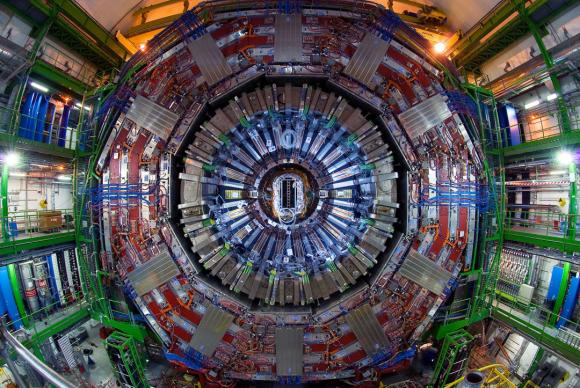PROVIDENCE, R.I. [Brown University] — The Brown University Department of Physics will celebrate the recent discovery of a particle consistent with the Higgs boson at an event to be held Tuesday, Oct. 9, at 7 p.m. in the Salomon Center for Teaching on the University’s campus in Providence. The event will feature an introduction by Brown President Christina Paxson as well as brief presentations by Brown physicists who played a substantial role in this historic discovery. The event is open to the public.
In July physicists from CERN, the European Organization for Nuclear Research, announced they had found a new particle that is a likely candidate for the long-sought Higgs boson, the physical manifestation of an invisible field thought to give mass to elementary particles. Brown physicists were involved both in the experimental research that detected the particle and in the theoretical research that predicted its existence nearly 50 years ago.
“The announcement that physicists, working collaboratively with teams from many nations, have discovered a new particle that is consistent with the Higgs boson marks both a significant accomplishment in the decades-long elucidation of the Standard Model and a new era of research aimed at better understanding and explaining the fundamental make-up of the physical universe,” Paxson said in a letter to the University community. “We note and celebrate with great pride the role that Brown faculty have played in this important discovery.”
Who
Brown physicists David Cutts, Ulrich Heintz, Greg Landsberg, and Meenakshi Narain are active members of the CMS, one of the two large-scale experiments operating at the Large Hadron Collider headquartered in Geneva, Switzerland. Gerald Guralnik is a theoretical physicist at Brown who, in 1964, published two papers on what is called spontaneous symmetry breaking and how that idea relates to the mass of elementary particles. His research was part of a series of papers that helped define the Standard Model of particle physics and predicted the existence of a particle that would become known as the Higgs boson.
What
Landsberg, physics coordinator for the CMS experiment, will open the program with historical remarks. Heintz, the leader of a CMS analysis review committee that oversaw one of the Higgs searches, will briefly discuss the discovery process. Narain, who directs one of the groups associated with the Higgs analysis, will describe other aspects of the experiment, and Cutts will comment on the excitement of being on shift in the CMS control room. A question and answer period will follow the presentations.
Where
The De Ciccio Family Auditorium in the Salomon Center for Teaching, located on the College Green in Providence
When
Tuesday, Oct. 9, 2012, at 7 p.m.

